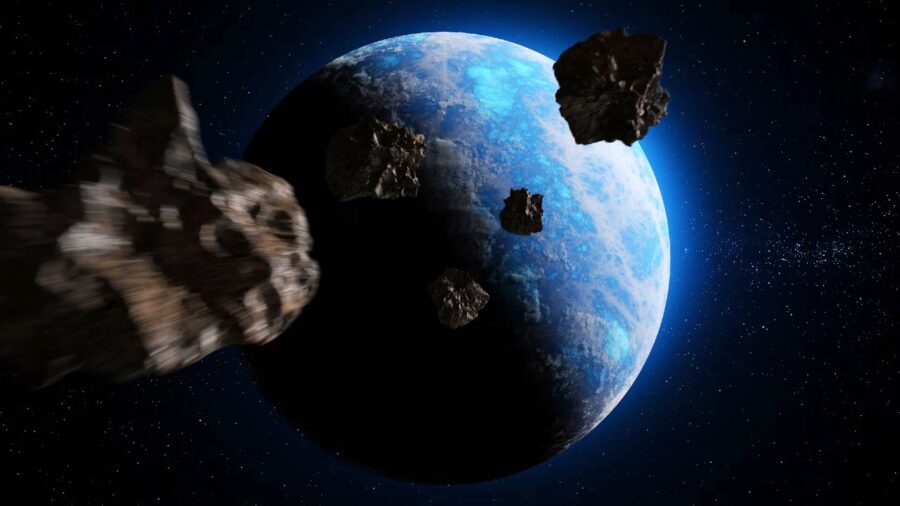Scientists Think Asteroid Dust Can Solve Global Warming

Climate change and global warming is a worldwide problem. Reacting to this problem has been slower than some would like and has often involved either reducing carbon emissions or planting more trees to help absorb emissions.
Scientists in Scotland have proposed a radical solution to the Earth’s climate change and global warming problem. It involves using a large dust cloud to create shade around the Earth and filter out the Sun’s rays. While it sounds like the things sci-fi movies start with right before some global calamity, this one actually might have legs.
Researcher Russell Bewick, a space scientist at the University of Strathclyde in Scotland, suggested that this geoengineering project could be the best possible way to counteract climate change, reverse global warming and cool down the Earth.
Bewick also suggests this project would only provide a slight decrease in temperature, but it’s significant enough to matter in the long run. Bewick explains:
“A 1.7 percent reduction is very small and will hardly be noticeable on Earth,” said researcher Russell Bewick, a space scientist at the University of Strathclyde in Scotland. “People sometimes get the idea of giant screens blocking the entire sun. This is not the case … as [the device] is constantly between the sun and the Earth, it acts merely as a very light shade or filter.”
Bewick goes on to recommend the possible use of an asteroid to anchor a dust cloud in space to act like clouds on Earth to block or filter sunlight.
The process would be a less expensive geoengineering solution instead of building orbiting mirrors to shade the Earth. Although the image of a system of orbiting mirrors would look cool in space, it’s not as practical to combat global warming as the dust cloud. The dust would theoretically reduce the amount of solar radiation Earth receives by a small percentage, which could offset the effects of global warming.
The idea behind this process would be to guide an asteroid to the Lagrange point in space. This is the area where the Earth’s gravitational pull cancels out that of the Sun.
This point is about four times the distance between the Earth and the Moon. It would bring and create a dust cloud big enough to filter the Sun’s rays by an estimated 6.58 percent of the solar radiation heading towards Earth, and in the process cooling it.
But how do you guide an asteroid to the Lagrange point in the first place? Back to Bewick:
“The company Planetary Resources recently announced their intention to mine asteroids,” Bewick said. “The study that they base their plans on reckons that it will be possible to capture an asteroid with a mass of 500,000 kilograms (1.1 million lbs.) by 2025.
Comparing this to the mass of Ganymede makes the task of capturing it seem unfeasible, at least in everything except the very far term. However, smaller asteroids could be moved and clustered at the first Lagrange point.”
Bewick wants to emphasize that the dust cloud solution isn’t the only practical choice out there when it comes to global warming. He still stands behind the idea that we need to reduce carbon dioxide emissions from everyday human use.
This isn’t the only way to save the Earth and successfully cure our planet from global warming. We could also, for example, build a forest of artificial trees to absorb carbon emissions.
In all, as global warming becomes more of an issue year-over-year, getting “creative” and out of the box with potential solutions will become more and more important. Admittedly, asteroid dust isn’t the be-all, end-all solution. It would act as something of a stop gap. But in this realm, something might be better than nothing. Even if that something is grabbing an asteroid and making it get to work for us.












